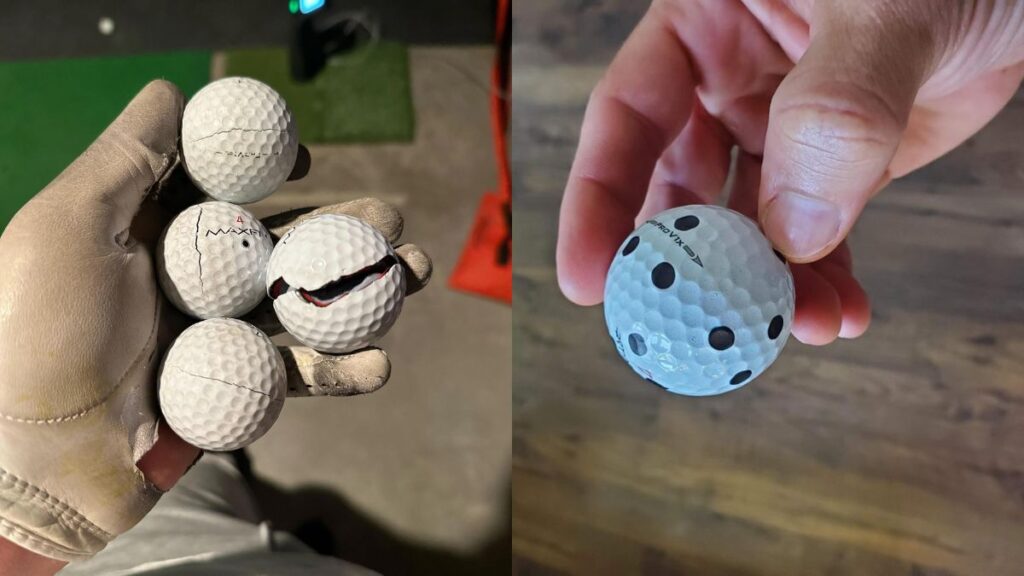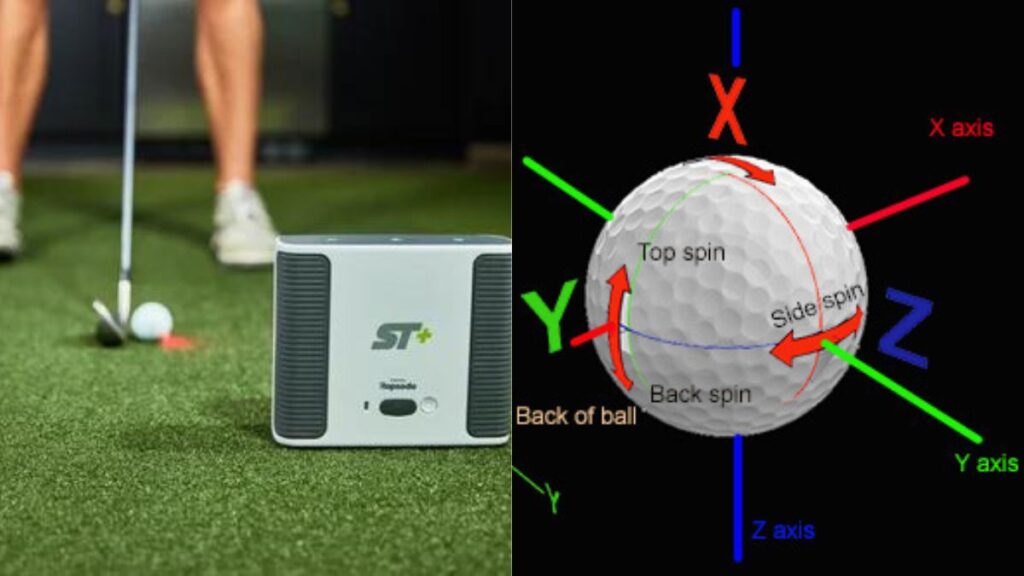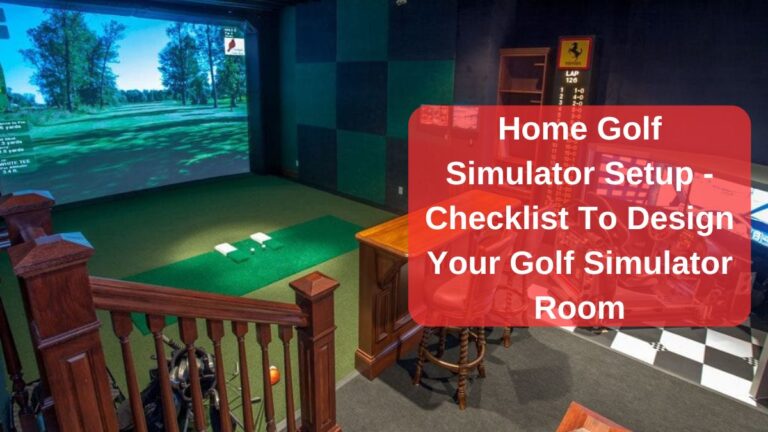Are There Special Balls for a Golf Simulator? Here’s What We Learned

Golf simulators have quickly become an incredible way to practice and perfect your game, no matter the weather or your location. But just like with any tool, there are tricks to getting the most out of it. One question we often get is, “Do you need special balls for the golf simulator?” And after trying out countless golf balls in different setups, we have some real-world answers for you.
We’ll walk you through what we’ve learned about using the right golf balls in a simulator. Our experience can save you from some common mistakes and help you optimize your practice. Spoiler alert: the ball you choose does make a difference.
How Golf Simulators Work and Why the Ball Matters?
Golf simulators use technology like cameras, radar, or infrared sensors to capture data. The system measures your ball’s speed, spin rate, launch angle, and sometimes even club path to give you a detailed picture of your shot.
Here’s the kicker—if your ball isn’t the right type, the simulator can’t do its job properly. This is why we say: Yes, the ball matters in a golf simulator! Using the wrong ball could lead to incorrect data, which can throw off everything from your spin rates to your distances.
We’ve found that the material, condition, and even markings on the ball can affect how the simulator reads it. This is especially true if you’re using a high-end system designed for precision.
How to Choose the Right Balls for a Golf Simulator?
Material and Performance – Urethane vs Ionomer
When it comes to golf balls, not all are created equal—especially in a simulator setting. Two common cover materials are urethane and ionomer. Let’s break these down.
Urethane Balls: These are your Pro V1s, Taylormade TP5s, and other high-end, premium balls. They provide more spin and a softer feel, making them the go-to for serious golfers on the course. However, we’ve noticed that these balls scuff up quickly in simulators, especially when hitting an impact screen repeatedly. Scuffed balls not only affect performance but also damage your screen faster. Urethane tends to be softer, which is great for spin but not so great for durability in a simulator.
Ionomer Balls: On the other hand, ionomer balls like the Taylormade Distance+ have a harder cover. We love these for simulator practice because they’re durable and can withstand the punishment of hitting a screen over and over. They might not give you the same soft feel or spin as urethane balls, but for the average golfer practicing their swing mechanics, these work just fine—and they last longer.
Our Suggestion: Use urethane balls if you want the most accurate representation of your game on the course, but be prepared to replace them often. If you’re just grinding away on mechanics, go for ionomer balls to save money and protect your screen.
How Long Do Balls Last in a Simulator? – The Wear and Tear Factor
We’ve seen this time and time again: balls wear out much faster in a simulator than they do on the course. When you’re hitting hundreds or even thousands of shots into a screen, that constant impact takes its toll.
From our experience, premium urethane balls like the Pro V1 last around 200-250 shots before you start noticing some scuffs. We’ve even seen some balls split after heavy use. And scuffed balls aren’t just an aesthetic issue—they can affect the accuracy of your shot data, especially when it comes to spin rates. Plus, scuffed balls are rougher on your screen.
On the other hand, balls with ionomer covers, such as the Taylormade Distance+, tend to hold up better under the constant barrage. These balls don’t get scuffed as easily, which means they’ll last longer and won’t damage your screen as quickly.
Our Suggestion: Rotate your balls! Yes, you heard that right. Instead of using one ball until it’s practically falling apart, rotate through a set of 5 or 6 balls to distribute the wear. You’ll extend the lifespan of your balls and get more consistent data.
Does The Simulator Ball Need Markings?

Well, there are a few simulators that require golf balls with special markings for accurate readings, like the Taylormade TP5 Pix or Titleist RCT (Radar Capture Technology) balls. These balls have patterns or reflective surfaces that make it easier for the simulator to pick up accurate data on spin and launch angles.
But here’s the catch: not every simulator needs marked balls. For example, if you’re using an optical system like SkyTrak or a camera-based simulator, the regular balls might work fine as long as they’re clean and in good condition.
In fact, we’ve experimented with marking our own balls using Sharpies or stickers to see if we could improve the accuracy. The results? Mixed. Sure, it helped in some setups, but it was a pain to keep up with, and honestly, the marks tended to wear off quickly.
If your simulator specifically recommends a marked ball for better accuracy, go for it. Otherwise, stick with regular, clean balls, and make sure they’re not too worn down.
Our Recommendations on The Best Balls for a Simulator
Let’s get down to the specifics. After extensive testing, here are the golf balls we recommend for your simulator:
Taylormade TP5 Pix: The Taylormade TP5 Pix balls are designed with visual technology that helps track ball flight and enhance visibility during simulation. Their unique markings ensure the simulator captures accurate data, making them ideal for serious players looking to improve performance.
Titleist RCT Balls: The Titleist Radar Capture Technology (RCT) balls are specifically engineered for simulators that rely on radar technology. These balls have internal radar reflective properties, allowing for more precise data capture, particularly with spin and speed measurements.
Simulators and Special Balls: Some simulators require golf balls with special markings or technology for accurate readings. These markings help the simulator’s sensors or radar systems capture detailed data about the ball’s speed, spin, and flight path, ensuring more realistic feedback during your practice sessions.
When Should You Replace Golf Simulator Balls?

One question we get a lot is: “How often should I replace my balls?” The answer isn’t cut and dry because it depends on how often you play and what kind of ball you’re using.
We usually replace balls after about 500-700 shots if we’re using urethane balls like Pro V1s. For ionomer balls like the Taylormade Distance+, we can go closer to 1,000 shots before we start noticing scuffs or reduced performance.
You’ll know it’s time to retire a ball when:
- The cover is visibly scuffed or cracked.
- Your spin rates or distances start fluctuating unexpectedly.
- The ball feels different off the clubface (trust us, you’ll know).
Final Tips & Suggestion
We’ve learned a few tricks over the years to get the most out of our simulator sessions. Here are some tips that can save you time, money, and frustration:
- Keep Your Balls Clean: Dirt, grass, or dust can mess with the sensors on your simulator, leading to inaccurate readings. We keep a damp towel handy to wipe off our balls between shots.
- Monitor Your Screen’s Condition: High-spin balls can wear out your screen faster. If you’re using urethane balls, check your screen regularly for damage.
Practice with Purpose: We love grinding out mechanics with a durable ball like the Taylormade Distance+, but when it’s time for serious data gathering, we switch to our “gamer” balls like the Pro V1 or Vice Pro.
You May Also Like Reading:
- 10 Must-Have Indoor Golf Accessories Guide
- What Do The Numbers On A Golf Simulator Mean?
- How To Identify The Cost Of A Golf Simulator
- How To Setup Best Golf Simulator Enclosure Size
- How To Start A Golf Simulator Business
- What Is A Golf Simulator?
- How Realistic Is A Golf Simulator?
- Beginner’s Guide To Using A Golf Simulator
- Golf Simulator Vs. Golf Launch Monitor
- Golf Simulator Hitting Mat Guide
- Golf Simulator Projector Setup
- Home Golf Simulator Design Ideas

I’m Khawar Iqbal, Founder of Golfsportal. I’m excited to be your guide in the world of Golf. At Golfsportal, I will keep you updated with insightful information that will help you improve your golfing experience and knowledge about what’s currently happening in the industry.






